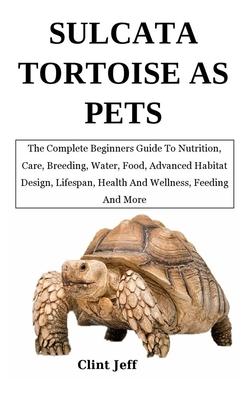
Book
Sulcata Tortoise as Pets: The Complete Beginners Guide To Nutrition, Care, Breeding, Water, Food, Advanced Habitat Design, Lifespan, Health And
by Clint Jeff
(Write a Review)
Paperback
$9.45
One of the Sulcata tortoise's most distinguishing features are the large, conical spurs on its rear legs, from which its name is derived. These spurs serve as a defense mechanism against predators and during male combat for territory or mating rights. Its legs are sturdy and columnar, well-suited for digging extensive burrows that can be several meters long. These burrows are essential for escaping the extreme heat during the day and the cold temperatures at night in their natural habitat, which ranges from the southern edge of the Sahara Desert to the northernmost regions of Central and West Africa.
The Sulcata tortoise has a relatively long lifespan, often exceeding 70 years in captivity, with reports of individuals living over 100 years. This longevity requires a significant commitment from pet owners, who must provide adequate space, proper diet, and care throughout the tortoise's life. Their diet in the wild primarily consists of grasses, herbs, and other vegetation, emphasizing the need for a high-fiber, low-protein, and calcium-rich diet to prevent health issues.
One of the Sulcata tortoise's most distinguishing features are the large, conical spurs on its rear legs, from which its name is derived. These spurs serve as a defense mechanism against predators and during male combat for territory or mating rights. Its legs are sturdy and columnar, well-suited for digging extensive burrows that can be several meters long. These burrows are essential for escaping the extreme heat during the day and the cold temperatures at night in their natural habitat, which ranges from the southern edge of the Sahara Desert to the northernmost regions of Central and West Africa.
The Sulcata tortoise has a relatively long lifespan, often exceeding 70 years in captivity, with reports of individuals living over 100 years. This longevity requires a significant commitment from pet owners, who must provide adequate space, proper diet, and care throughout the tortoise's life. Their diet in the wild primarily consists of grasses, herbs, and other vegetation, emphasizing the need for a high-fiber, low-protein, and calcium-rich diet to prevent health issues.
Paperback
$9.45